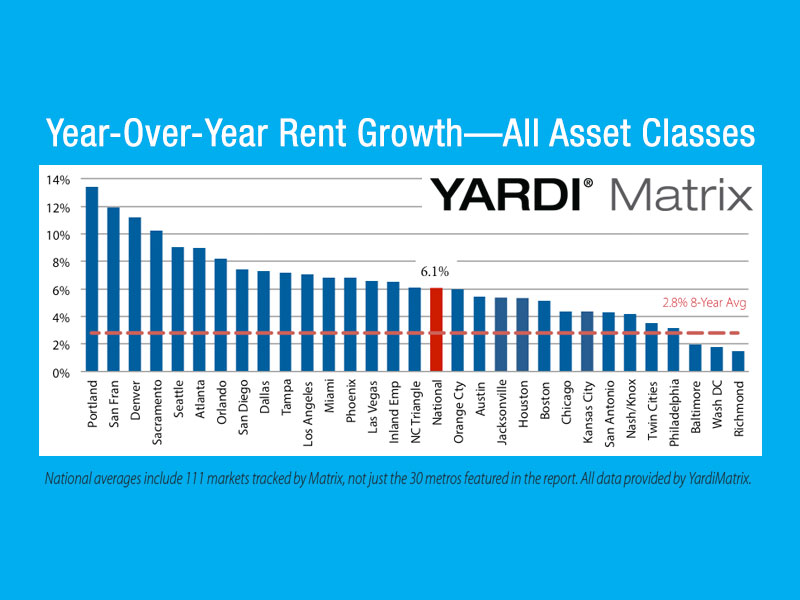Matrix Monthly: 2015 Rents Exceed Average
The Yardi Matrix Monthly report for December 2015 revealed a year-over-year increase well above the national historic averages.
Santa Barbara, Calif.—Rents rose a notable 6.4 percent in 2015, making this increase the second highest in the last decade and 190 basis points more than 2014, according to Yardi Matrix’s monthly report. The December Matrix Monthly report, released today, covers the past year as well as the trailing three months.
December rents maintained the year’s momentum with an average of $1,165 nationwide, only $1 less than the all-time peak in September and October. However, this slight decline isn’t cause for concern, according to the report, it’s consistent with typical seasonal flattening. As it is, nationwide rent growth is well above the historical average.
The past year’s demographic trends are expected to continue into the new year as the Millennial generation comes of age while their baby boomer parents scale down from large houses. “The combination of growth in households of younger adults and the trend of baby boomers renting more will continue to keep demand for rentals strong over the coming year,” said Paul Fiorilla, editorial director of Yardi Matrix.
Metros with thriving business and technology cultures maintained their position at the top of the heap, with the top five cities for rent gains being Portland, Ore., Sacramento, Calif., Seattle, San Francisco and Los Angeles. “Demand is going to stay strong,” Fiorilla asserted. “The millennial generation is still aging into the prime renter cohort, so the number of 20 to 34-year olds will continue to increase over the next few years, and we’re anticipating another year where 2-2 ½ million jobs are expected, which will help millennials form households.”
While the Western tech markets lead the way in rent growth, some of the Southern markets are gaining in popularity as more employment centers set up shop in areas like Atlanta, Ga., Austin, Texas, Raleigh/Durham, N.C. and Miami. “We expect that growth will continue to be focused in the metros that have robust job creation and population growth, the knowledge centers concentrated on the creative industry, and markets that are affordable and have an attractive climate,” said Fiorilla.
Click here to view the report.








You must be logged in to post a comment.